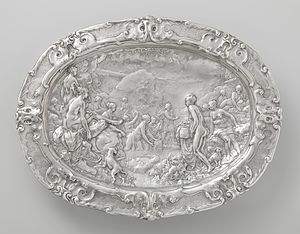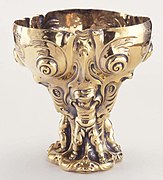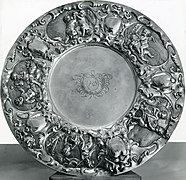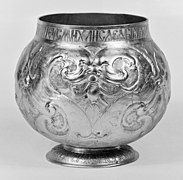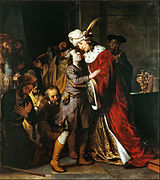
Rococo, less commonly Roccoco or Late Baroque, is an exceptionally ornamental and theatrical style of architecture, art and decoration which combines asymmetry, scrolling curves, gilding, white and pastel colours, sculpted moulding, and trompe-l'œil frescoes to create surprise and the illusion of motion and drama. It is often described as the final expression of the Baroque movement.

Ormolu is the gilding technique of applying finely ground, high-carat gold–mercury amalgam to an object of bronze, and for objects finished in this way. The mercury is driven off in a kiln leaving behind a gold coating. The French refer to this technique as "bronze doré"; in English, it is known as "gilt bronze". Around 1830, legislation in France had outlawed the use of mercury for health reasons, though use continued to the 1900s.

The Hague School is a group of artists who lived and worked in The Hague between 1860 and 1890. Their work was heavily influenced by the realist painters of the French Barbizon school. The painters of the Hague school generally made use of relatively somber colors, which is why the Hague School is sometimes called the Gray School.

A putto is a figure in a work of art depicted as a chubby male child, usually naked and sometimes winged. Originally limited to profane passions in symbolism, the putto came to represent the sacred cherub, and in Baroque art the putto came to represent the omnipresence of God. A putto representing a cupid is also called an amorino or amoretto.

The Milkmaid, sometimes called The Kitchen Maid, is an oil-on-canvas painting of a "milkmaid", in fact, a domestic kitchen maid, by the Dutch artist Johannes Vermeer. It is now in the Rijksmuseum in Amsterdam, the Netherlands, which regards it as "unquestionably one of the museum's finest attractions".
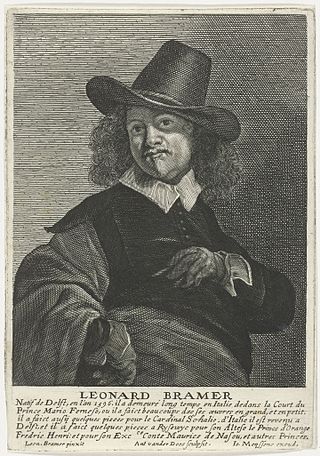
Leonaert Bramer, also Leendert or Leonard, was a Dutch painter known primarily for genre, religious, and history paintings. Very prolific as a painter and draftsman, he is noted especially for nocturnal scenes which show a penchant for exotic details of costume and setting. He also painted frescos—a rarity north of the Alps—which have not survived, as well as murals on canvas, few of which are extant. Bramer is one of the most intriguing personalities in seventeenth-century Dutch art.

The Love Letter is a 17th-century genre painting by Jan Vermeer. The painting shows a servant maid commenting to her mistress on a letter the woman holds. The painting is in the Rijksmuseum Amsterdam.

Northern Mannerism is the form of Mannerism found in the visual arts north of the Alps in the 16th and early 17th centuries. Styles largely derived from Italian Mannerism were found in the Netherlands and elsewhere from around the mid-century, especially Mannerist ornament in architecture; this article concentrates on those times and places where Northern Mannerism generated its most original and distinctive work.

Janus, or Johannes Lutma the elder was a well-known Dutch silversmith.

Jan Baptist Xavery or Jan Baptist Xavery was a Flemish sculptor principally active in the Dutch Republic. He produced portrait busts, large scale statues for residences and gardens, church furniture, wall decorations, tomb monuments as well as small scale statuettes in boxwood, lime wood, ivory and terracotta. The latter were made for elite collectors who liked to admire such objects in the privacy of their homes. He worked on various projects for William IV of Orange-Nassau, the Prince of Orange who later became the Stadtholder. He is regarded as the leading sculptor active in the Dutch Republic in the first half if the 18th century.

Paul van Vianen or Paulus Willemsz van Vianen (1570–1614) was a silversmith, medallist and sculptor of the Northern Netherlands, trained in Northern Mannerism but then important in developing the Baroque auricular style with his brother Adam van Vianen.

Adam van Vianen was a leading silversmith of the early Dutch Golden Age, who trained as an engraver and was also a medallist. Unlike his brother Paul van Vianen, he spent little time away from his native Utrecht. Together they developed the auricular style which bridges the gap between Northern Mannerist and Baroque ornament.
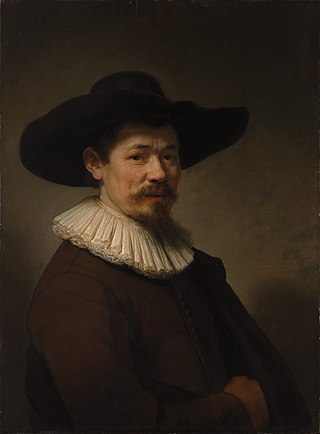
Herman Doomer or Hermann Dommers was a Dutch Golden Age furniture and frame-maker who is best known today for his portrait by Rembrandt.

A toilet service is a set of objects for use at the dressing table. The term is usually reserved for large luxury sets from the 17th to 19th centuries, with toilet set or vanity set used for later or simpler sets. Historically, services were made in metal, ceramics, and other materials, for both men and women, though male versions were generally much smaller. The rich had services in gold, silver, or silver-gilt. The contents vary, but typically include a mirror, one or more small ewers and basins, two candlesticks, and an assortment of bowls, boxes, caskets, and other containers. One or more brushes and a pin-cushion, often as a top to a box, are often included. The sets usually came with a custom-made travelling case, and some services were especially designed for travelling.
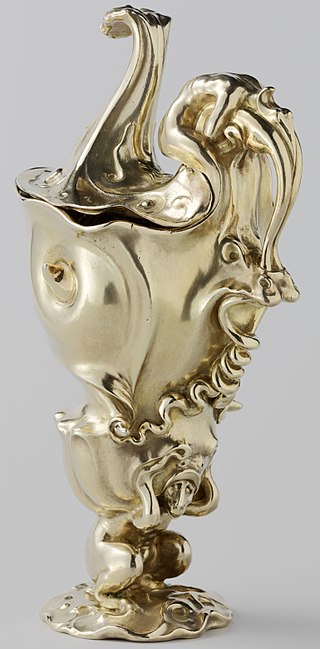
TheMemorial Guild Cupby Adam van Vianen is a 1614 silver-gilt covered ewer in the Rijksmuseum, commissioned by the Amsterdam goldsmiths' guild to commemorate the death of Adam's brother Paulus van Vianen. It is an iconic symbol of the auricular style developed by the two brothers.

Christiaen van Vianen was a Dutch silversmith and draughtsman. He was the son of Adam van Vianen and worked in his father's auricular style as a silversmith and designer, also working in Germany and England.

Isaac Blessing Jacob is a 1642 religious painting by Gerbrand van den Eeckhout. It shows Jacob kneeling at the bed of his blind father Isaac under the watchful eye of his mother Rebecca as he receives his brother Esau's blessing. It is in the collection of the Metropolitan Museum of Art.

The Continence of Scipio is a c. 1653 painting by Dutch artist Gerbrand van den Eeckhout. It shows the continence of Scipio and is now in the collection of the Rijksmuseum in Amsterdam.
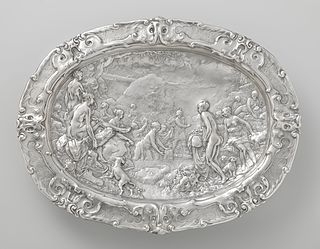
The Diana and Actaeon basin or Basin with Scenes from the Myth of Diana and Actaeon is a 1613 silver bowl produced by the Dutch silversmith Paul van Vianen. It shows scenes from the myth of Diana and Actaeon, with a border in the Auricular style. It is in the collection of the Rijksmuseum in Amsterdam, which acquired it in 1947.
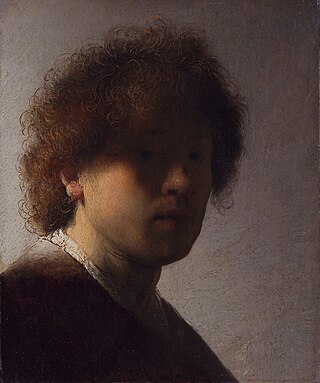
Vereniging Rembrandt is a Dutch association of art patrons who raise funds to assist Dutch museums and art galleries in purchasing artworks. Since it was founded in 1883, it has helped purchase over two thousand works, including Vermeer's The Milkmaid.


